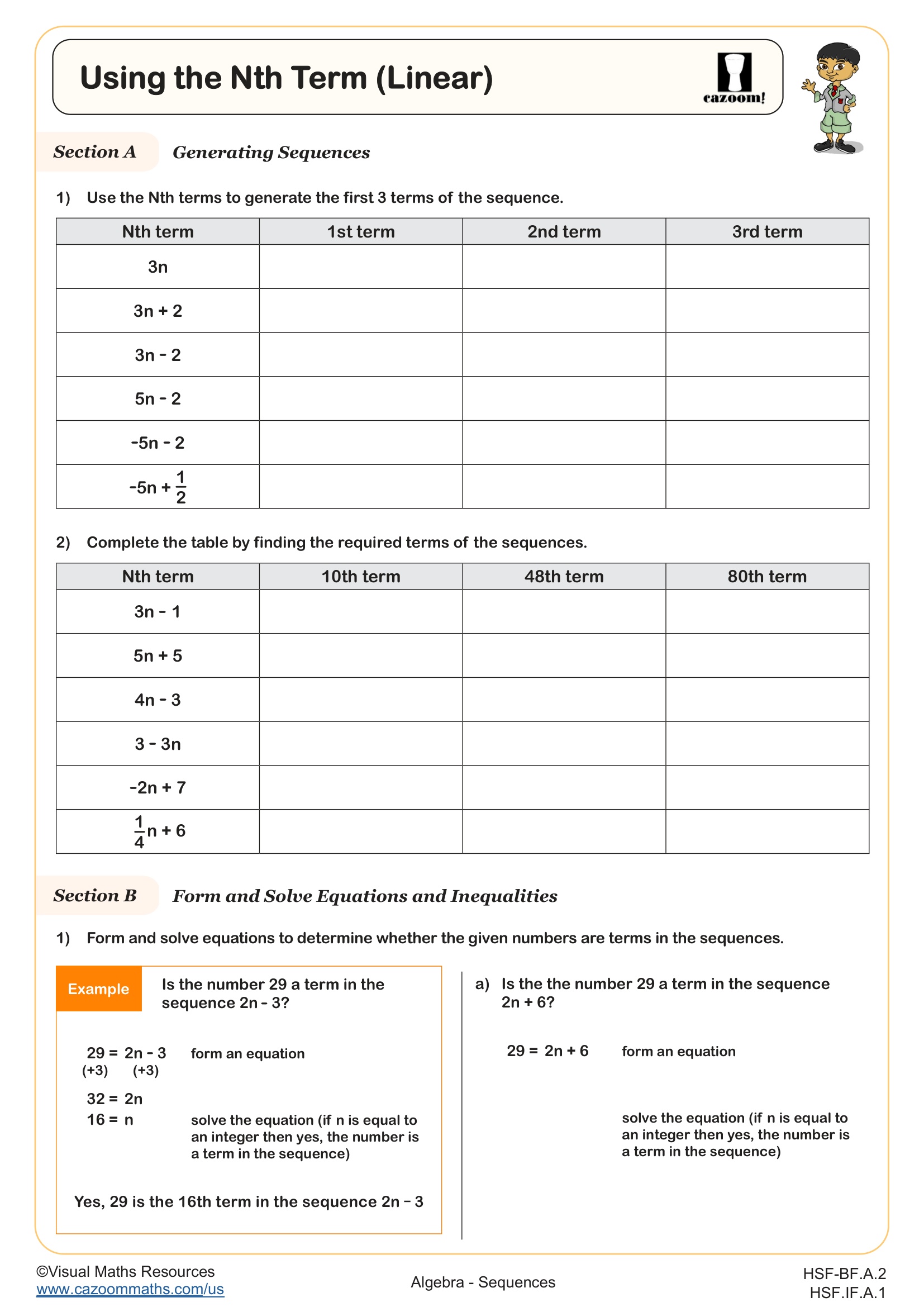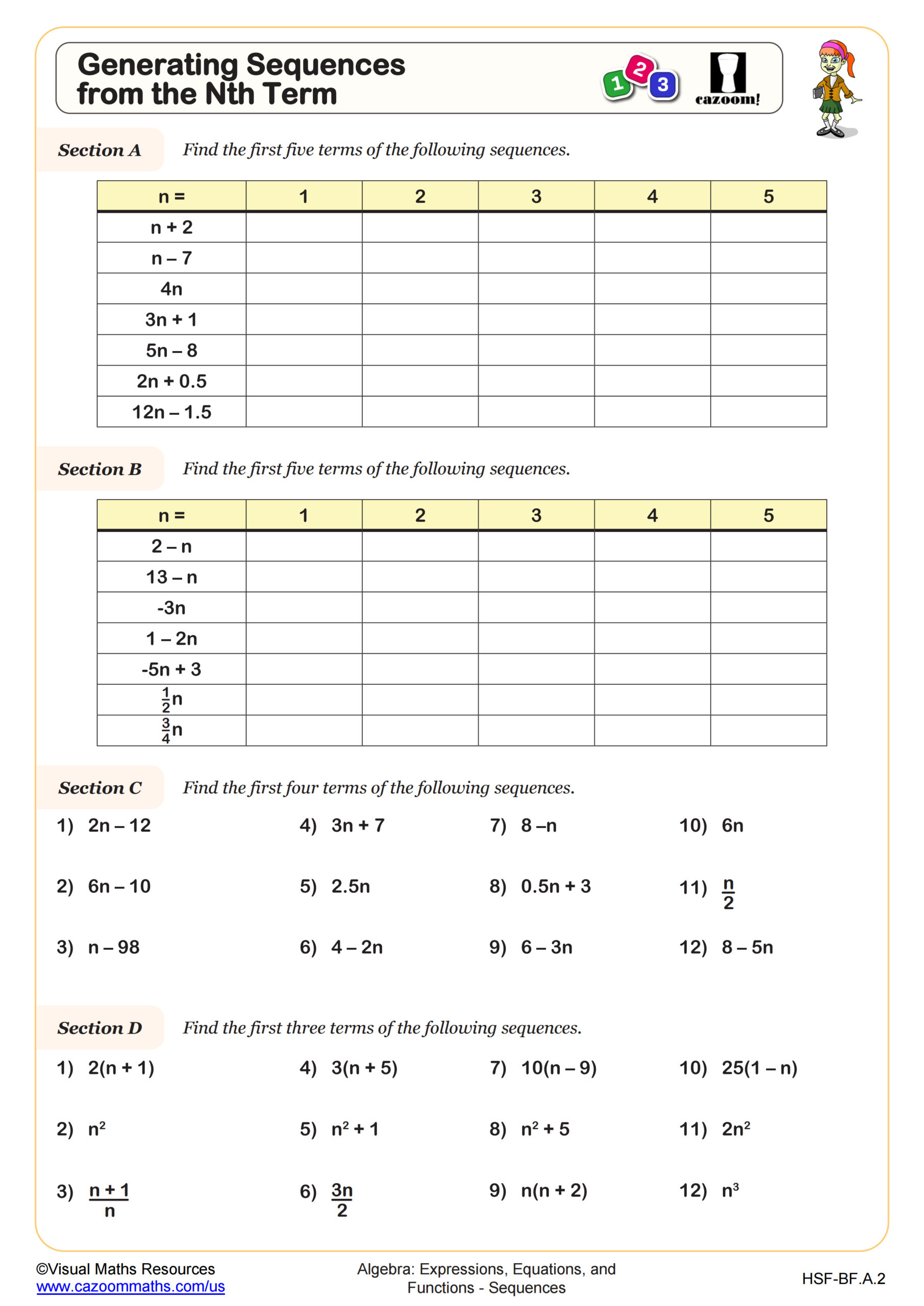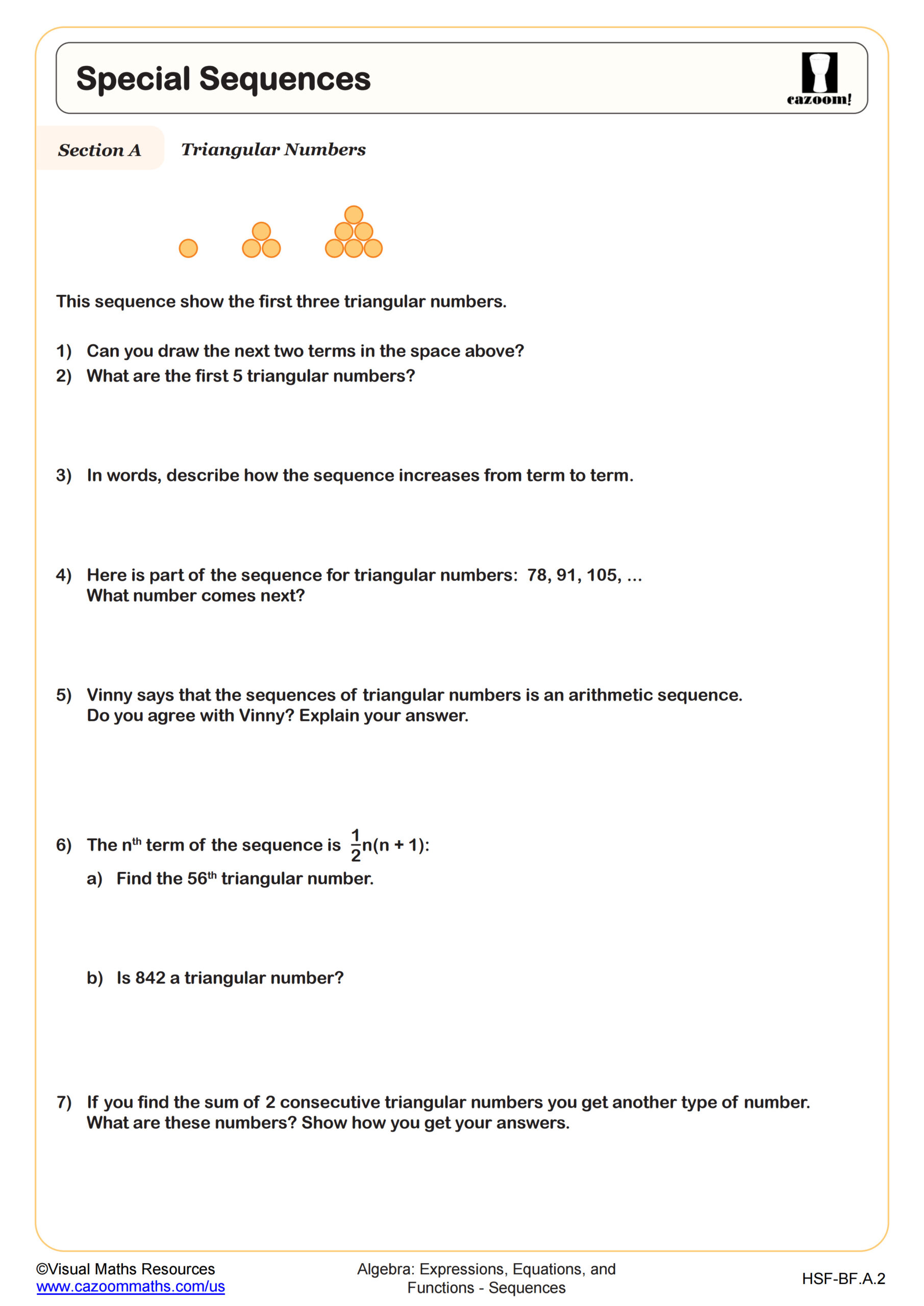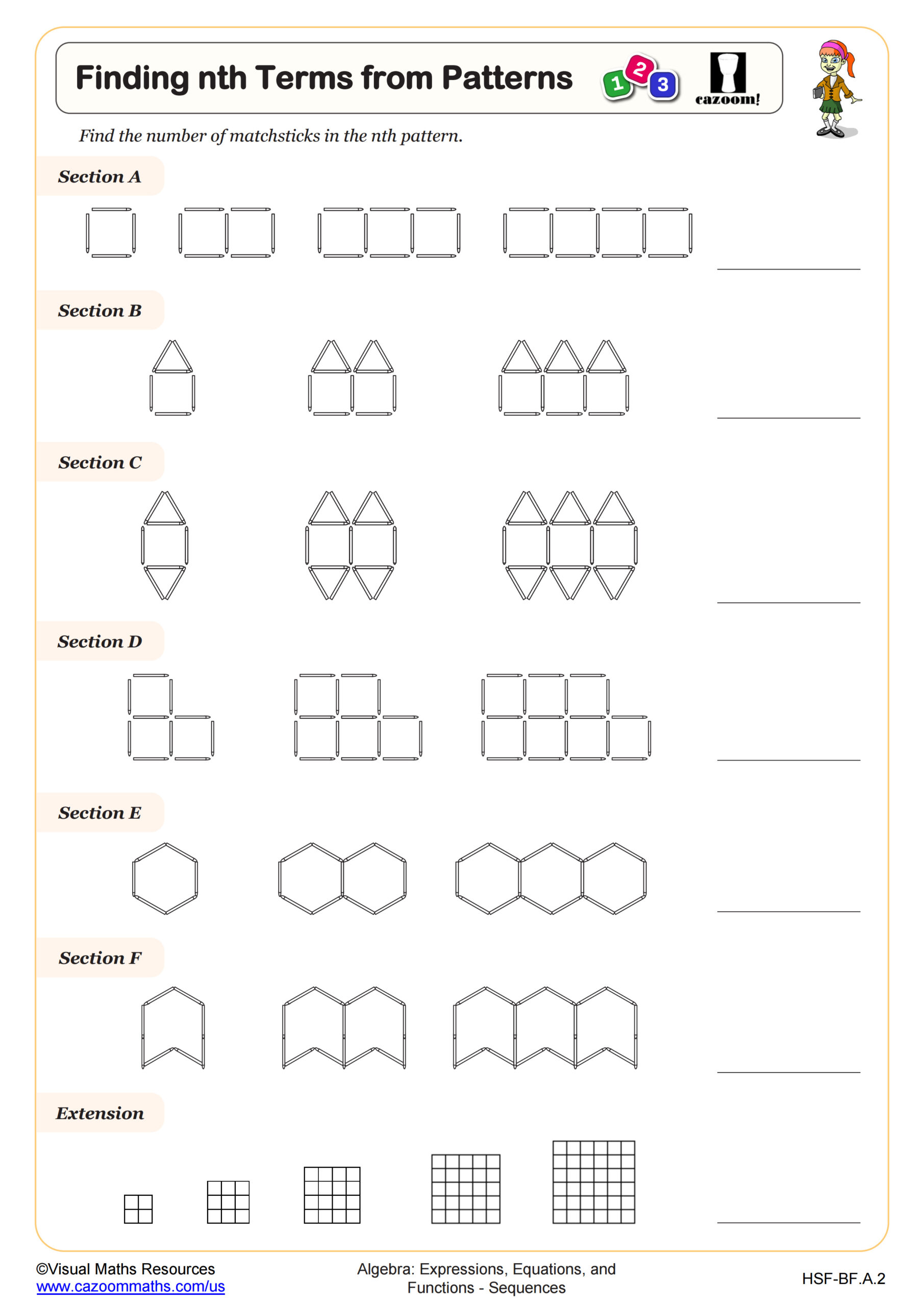Back to:
Using the Nth Term (Linear) WORKSHEET
Suitable for Grades: Algebra I, IM 2
CCSS: HSF.BF.A.2, HSF.IF.A.1
CCSS Description: Write arithmetic and geometric sequences both recursively and with an explicit formula; use them to model situations and translate between the two forms.
Understand that a function from one set (called the domain) to another set (called the range) assigns to each element of the domain exactly one element of the range. If f is a function and x is an element of its domain, then f(x) denotes the output of f corresponding to the input x. The graph of f is the graph of the equation y = f(x).
Understand that a function from one set (called the domain) to another set (called the range) assigns to each element of the domain exactly one element of the range. If f is a function and x is an element of its domain, then f(x) denotes the output of f corresponding to the input x. The graph of f is the graph of the equation y = f(x).
Using the Nth Term (Linear) WORKSHEET DESCRIPTION
In this worksheet, students will explore the Nth terms of linear sequences to accomplish several key tasks. They will: generate sequences from given Nth terms, find specific terms within these sequences, determine whether a given number is part of a sequence, and calculate which term will cause a sequence to exceed a specified value.
The sequences provided include both increasing and decreasing patterns, with some featuring fractional coefficients of n. Students will need to find the Nth term for two numerical sequences and two sequences expressed as patterns. These skills will be applied to answer various questions related to the sequences.




